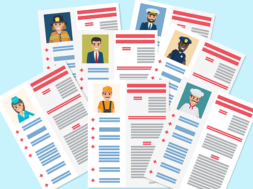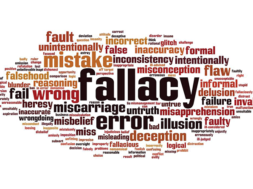
Verifiable Placement Rates: Strategies for Compliance and Success
By Elizabeth Keifer Herron, Solutions Executive, Collegiate Admission and Retention Solutions (CARS)
Regulatory climate and widespread attention on placement rates
Scrutiny on institutional outcomes is at an all-time high, and the focus on employment and placement rates has been galvanized to the top of the list. Institutions must prepare themselves to meet the increased attention on accurate and documentable placement statistics with the same focus they utilize to evaluate and manage institutional default rates. Obtaining and maintaining quality student contact information and developing and maintaining relationships with students and employers will be central to this effort.
State Attorney General’s offices have a demonstrated pattern of evaluating institutional placement results and many have been quite aggressive with investigations and even litigation.
Recently accrediting agencies have been evaluated by outside regulatory agencies stating,
“Lapses that we have encountered include a failure to take action when improper job placement statistics are reported, inadequate job placement verification processes, and a lack of transparency and cooperation with investigations into student outcomes.”
Accrediting commissions are charged with putting more “teeth” into their oversight, and a failure to do so could have irreconcilable implications. Several national accrediting commissions have increased their review and oversight of placement rates, while others have shifted toward requiring independent third party verification of information comprising those rates. Integral to the review process is the ability of a third party to contact the employer or graduate to validate the placement, including:
- Job title;
- Job duties if the job title is not obviously “in field;”
- Initial start date of employment in a specified position;
- End date of employment/duration of employment; and
- Confirmation that the position was employment and not a volunteer or unpaid position.
The U.S. Department of Education (ED) has also increased the penalties associated with misrepresentation as it relates to a myriad of data and information available to students and families, including placement statistics and expected earnings by occupation (34 CFR 668.74).
ED also announced plans in February 2016 to create a Student Aid Enforcement Unit which will more quickly respond to instances of suspected misconduct by institutions, conduct detailed investigations and may serve to deter misconduct with the knowledge that there will be additional oversight. However, a recent report published by the Center for American Progress entitled, “Looking in all the Wrong Places” suggests that the audit and program review processes administered by the U.S. Department of Education are not sufficient, and indicated they are missing key critical elements of oversight, particularly in the area of misrepresentation of institutional charges, educational programs and the employability of graduates.
Further, media coverage of class action lawsuits against institutions, alleged misrepresentations resulting in loan forgiveness and other investigations into large for-profit chains brings the accuracy of placement rates to American households every day. Families are becoming more savvy or suspicious as they shop for higher education and may be more demanding of “proof” when it comes to institutional disclosures. Institutions have no choice but to be ready with documentable, accurate and verifiable placement rates.
Community awareness
When establishing new policies or procedures in any operational area, stakeholders must understand and “buy-in” to the rationale or need for the changes. From admissions to career services and alumni relations, all institutional staff must understand accurate and verifiable placement records are as much a “key” to continued eligibility as cohort default rates have been.
Institutional leadership should advise team members the additional scrutiny in this area does not reflect a lack of trust in them but a necessity to meet the changes in today’s regulatory climate.
Current and prospective students must also be made aware of the regulatory changes necessitating ongoing contact and information regarding employment and earnings. Career services staff must build rapport with students creating an environment conducive to a comfortable sharing of information and understanding the reason an independent third party may also need to verify graduate employment; this is a normal process and not a reflection of some sort of problem. If an institution must perform an employment or earnings survey for a group of students who have already graduated, the institution should advise the students by phone, blast text, web-page updates or email so they are not caught off-guard when the verification campaign begins.
Institutions must also educate their employers on changes in the area of employment and earnings tracking and the need for external audit/verification. Institutions should advise employers of the timelines regarding external verification campaigns and make efforts to conform to preferences for types and times of contact by verifiers with employers. Recognizing historic verification will be harder to obtain, institutions MUST reach out to employers of prior graduates before the launch of a third party verification campaign to legitimize the role of the verifier as a contractor for the institution.
Data integrity
At the heart of verifiable placement records is data integrity. The information in your institutional database must be accurate and reflect the most up-to-date information available. A reliable rationale for employing a third party servicer is the arm’s length advantage of passing data accountability to the servicer.
Too often, team members will keep hand-written notes in paper files, particularly when actively working with a graduate for placement. They have the best intentions of getting the information into the database, but sometimes fall short of executing. Institutional staff must be held accountable for placing all information in the database in a timely manner, particularly as it relates to updates to contact information for current students and graduates.
- Updates to student contact information must be gathered frequently.
- Alternate methods of contact should be secured (Facebook, LinkedIn, and other social media venues).
- Contact information obtained should be “tested” to ensure its accuracy (emails sent, calls made).
- Permission to text or call a cellphone should be secured in writing at entrance, mid-point and graduation.
- Authorization to obtain information regarding employment and earnings should also be secured at mid-point and graduation.
Team members must use the institutional database in a uniform and consistent manner, placing key data fields in the same location so queries to extract the data for placement verification capture the necessary information. When extracting a placement file for an annual report, state review or to send for third party verification, all necessary fields regarding employment must be populated accurately from the most current information. Information input into database fields must be quality-control checked or audited internally to avoid erroneous information being sent to a third party for verification.
- Incorrect or missing phone numbers or email addresses may result in a record being “unverifiable.”
- Placements reported by students that are not internally checked with the employer for accuracy may preclude verification by a third party.
- All recorded placements should be verified internally AFTER the intended start date to ensure the graduate actually began work. Failure to verify the graduate actually began work is the single greatest cause for a finding of “invalid placement.”
Institutions should capture third party verifications and import them into their institutional database. When selecting a third party verification partner, confirm the organization will maintain auditable records of contacts and outcomes (recordings, emails, faxes), and ensure copies of this information can be made available to the institution.
However, this does not supplant the institutional requirement to maintain a record of the verification in-house.
While copies of reports and certification statements from verifiers should satisfy most regulatory entities, some may prefer to see evidence of the third party verification within the institutional database. Having a flag that is flipped once a placement is verified by a third party, including outcome of the verification, date and source of the verification is one way to manage the verification process.
Top 10 placement verification strategies for success
1. Timing is everything – The older the data, the more challenging it is to secure placement verification. Telephone numbers and email addresses are more likely to be wrong or “skip,” graduates’ loyalty to the institution will wane as time passes, employer contact people may no longer be employed, and employer responsiveness will decline if the graduate is no longer employed.
2. Plan ahead – Forecast upcoming accreditation, state or other reviews and secure third party verification of the data included in the review when it is current (within 90 days from the date of initial placement). This not only balances workload but will result in more positive results.
3. Multi-modal communication is critical – Institutions must gather multiple ways to contact employers and graduates if a third party verification campaign is to be successful. While faxes may be the only way one employer will verify, others may prefer email correspondence, telephone outreach or even regular mail. By and large, graduates will reply via email or telephone, but a balanced approach alternating contact methods is best. When an H.R. department exists, hone those relationships for easier access to direct supervisors.
4. Details – Third party verifiers will question employers and graduates regarding institutionally provided information exactly. If the start date or job title are not accurately supplied, the verification may return with a finding of verified to be placed but different. Audit your file before sending it out for verification or as the information is input into the database.
5. Balancing outreach efforts to prevent fatigue – When preparing for a one-time third party verification campaign or gathering data for ongoing verification, beware of creating outreach “fatigue.” When preparing for a one-time verification of historic data, do not call every employer or graduate to re-verify the data in your database the few weeks preceding the outreach efforts of your third party. The employers will not distinguish between your contact and their contact. Instead, consider a phone or email campaign to let them know your third party verification partner will be contacting them. Similarly, if working in “real-time,” pace the submission of data to your third party verifier insuring they are not calling to verify data you just secured the prior week.
6. Too much of a good thing – Institutions and their third party verifiers must strike a balance between diligent attempts to reach employers and graduates, and creating a sense of being harassed. The “right” number of outreach attempts will vary greatly based on the age and quality of the data, as well as the awareness by employers and graduates of the process.
7. Securing current authorizations – Many employers will require a third party verifier to provide a current (within three – six months) signed authorization from the graduate for them to release information regarding employment. Implement a process at your institution to obtain updated authorizations at multiple points throughout the program. Include authorization to contact the graduate via cellular phone and even text.
8. Batch contact efforts – When working with an employer that hires many of your graduates, request a preferred contact method the verifier may utilize to communicate and ensure contact efforts are batched. Make certain your verifier will not call an employer who has hired five graduates in a campaign five different times. Employer relationships are critical to your long-term success.
9. Consolidate survey needs – If you plan to conduct earnings or satisfaction surveys of graduates or employers, consider customizing your third party verifier’s scripts and outreach tools to encompass all of your survey needs.
10. Compliance is critical – If a graduate has requested to be placed on your “do not call list,” make certain you do not forward the graduate’s phone number to your third party verifier. Similarly, when working with a third party, ensure that personally identifiable information is managed securely, and any requests for Social Security numbers by employers are transmitted only through secure channels.
Value proposition
Securing third party verifications of all placements at your institution will have a cost. If verifications are performed in real-time, they should cost less per verification and will yield greater results. In addition, your verification partner may also gather information during their outreach to assist you with your ongoing relationships with employers, such as an employer’s need for additional employees or satisfaction with graduate skills. Finally, real-time verification enables institutions to identify problems with a program in time to deploy corrective measures before a potential for misrepresentation occurs.
Elizabeth Keifer Herron, a founding partner of PEAC Student Loan Assistance, is currently a member of the executive management team of Collegiate Admissions & Retention Solutions, CARS. Elizabeth provides client services, community outreach and is the chief compliance specialist for the CARS firm. She serves on numerous higher education association committees, presents at numerous workshops and conferences, and her presence in Washington, D.C. enables her to acquire up-to-the-minute information on a variety of legislative and regulatory issues affecting the higher education industry. Formerly, Elizabeth was the chief lobbyist for the Career College Association (now APSCU). She received her BA with honors in political science and economics from Douglass College of Rutgers University, and resides in Washington, D.C. with her husband and two young sons.
Contact Information: Elizabeth Keifer Herron // Solutions Executive // Collegiate Admission and Retention Solutions (CARS) // 202-558-2337 // ekherron@collegiatersvp.com // www.collegiatersvp.com











